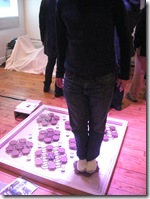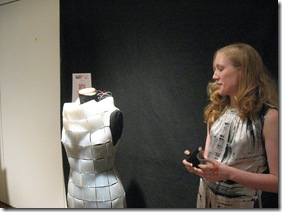That’s a quote from my friend Carl…What it means to me is that users give me their stories and I turn those stories into information and meaning…one story is an anecdote…a collection of stories is a design research report.
Check out this month’s Innovation Magazine featuring a slew of great articles from the IDSA Research Section.
What’s fun and cool in the issue?
ModeMapping is always a good time. (pdf here). Showing the story of a user’s experience visually always helps me (and a team) understand what the big picture is, and chunking the patterns into Modes can help the design process a lot. In essence, it’s really just a visual storyline…x-axis is time and the y-axis can be anything, really: enjoyment, tasks, roles. The key is the transition points. When users shift modes, there’s a real opportunity for design attention.
Participatory Design is worth revisiting, too. (pdf here). It revolves around giving the user a toolkit to design with alongside the investigative team, under guidance. Velcro, paper cutouts and stickers make it fun and easy. I think of these activities as design toys.
The three steps of PRIME – DREAM – CREATE are the guideposts for the process.
Priming is about getting users to think about their experiences, to talk and get into a flow. This gets the participants in the state to think or re-think their experiences. That’s the dream step. Once they are immersed in their dreams users can drift away from constraints and begin to think of their ideal experience. They may not know how to realize their vision – that’s finally up to the design team, to wrangle with trade-offs…but at this stage I want the user to focus only on the ideal situation. That ideal helps me define the top-level user experience that i want to capture in the product. That ideal is the one I fight for.
Oh…and don’t forget Testing! There’s an article from my old Design Research Professor on testing. (pdf here). On the subject of testing, I can only recall the words on another immortal Pratt professor who said “Mock it up before you fock it up.” (Thanks, Bruce!) What he’s trying to say is fail early and often, and get something in front of a set of users to get feedback. Iterations are ideal.
Oh…Ideals.





















